- JAPANESE
- LANGUAGE
X
 THAT IS GOOD
THAT IS GOOD
As the second installment of our “ZEKKEI ×Artist” Jomon feature, we’ve released a DJ performance by J.A.K.A.M., shot at the Oyu Stone Circles in Kazuno City, Akita Prefecture, which is one of the components of the “the Jomon Prehistoric Sites in Nothern Japan”, which was registered as a World Heritage Site in July!
The shooting of this video was done in September last year. When we came up with the idea of filming at a Jomon site in the northern Tohoku region, J.A.K.A.M. was interested, and since his paternal grandmother was originally related to Akita, we asked him to appear.
For more information on the Oyu ringstone, I’ll leave it to Ms. Kusakari of the Jomon unit “nawa to yajiri”, who has reported on many Jomon sites for THAT IS GOOD, and also to Mr. Hirokawa’s photos. Here is an excerpt from the report: “There are several theories as to what the ringstone is, including a cemetery, a ritual site, and a site for astronomical observation.”
We actually made preparations early in the morning and waited for the sunrise to shoot the video, but as we watched the sunrise in front of the stonework in the shape of a sundial, we imagined that they must have been observing the movement of astronomical objects and the change of seasons. This may not have been the only purpose of the site, but it gave me the impression that it was linked to the universe and the flow of nature.
It was a “place” where I could feel the “power” linked to the flow of the universe and nature, and when I let myself meditate on J.A.K.A.M.’s sound, which seemed to express the “flow of the power of the universe and nature” and “the life we live in it,” I remembered the feeling of the sun on a September morning that gradually warmed the air and began to gently warm my skin. Especially from about 5 to 15 minutes into the video, the sun gradually comes out and spreads its rays, gradually warming the earth of the Stone Circles
The music by J.A.K.A.M., combined with the beautiful view, makes you truly feel the beauty and glitter of this world..
Furthermore, according to Kusakari’s article, this Stone Circles may have been a “monument to death and rebirth,” as the title suggests. As she says in her closing remarks,
“When I think about it, I think that the grave was a positive place to live in the future.
What was the nature of the festival that took place here? Let’s imagine it with the music of J.A.K.A.M. as known as JUZU a.k.a. MOOCHY, who has created many festival places in the past.”
That’s exactly what I thought, and I hope everyone can enjoy the beauty of the sunrise on film while letting their imaginations run wild.
So here is the start of her article. One last time, I would like to introduce a few additional episodes from this shooting.
Jomon Prehistoric Sites in Northern Japan were registered as a World Cultural Heritage site in July 2021. One of its constituent assets, the Oyu Stone Cercles, is the collective name for two stone circles located on a small plateau in the mountainous city of Kazuno, Akita Prefecture.
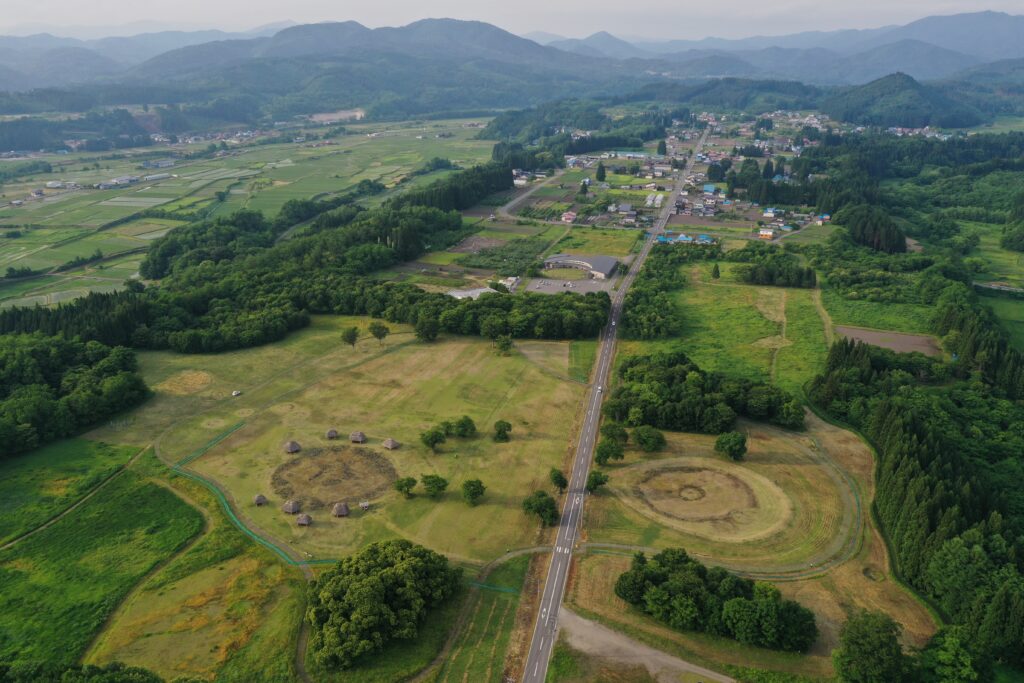
Manza (52m in diameter), one of the largest stone circles in Japan, and Nonakado (44m in diameter), a smaller stone circle, are both arranged in a double ring around the center and periphery. Up close, you can see that they are made up of dozens of assembled stones.
There are about 7,200 stones. The pale green stones, which occupy 95% of the total, were transported little by little from a river 7 km away from the ruins over a period of about 200 years. The people who carried and arranged the stones, some of which weighed 10 to 20 kilograms for small ones and 200 kilograms for large ones, were people who lived in the late Jomon period between 4,000 and 3,500 years ago.
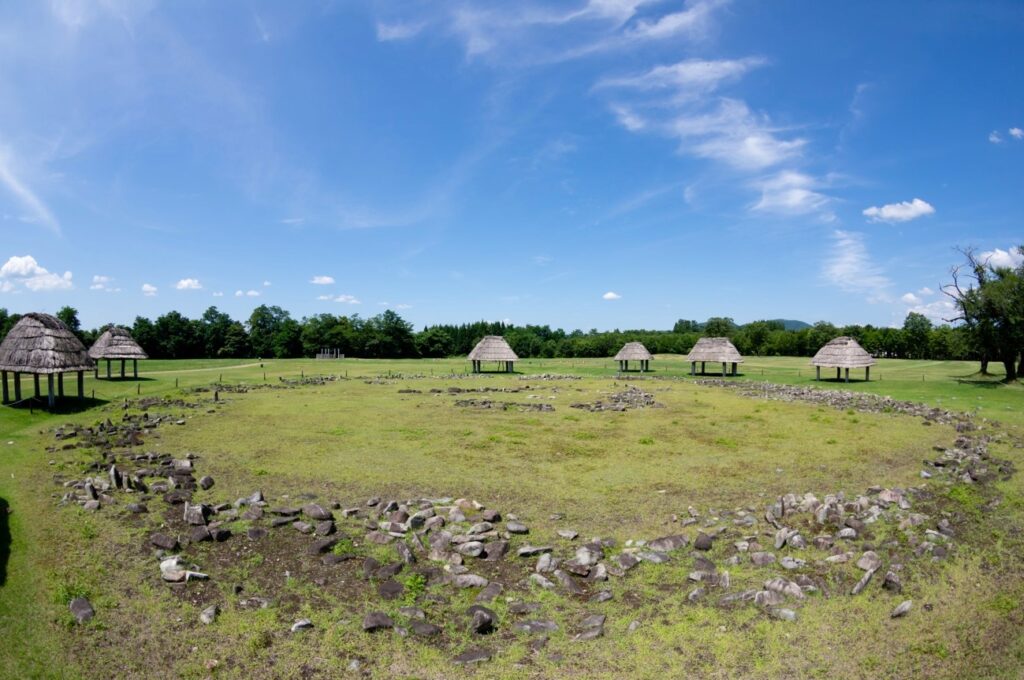

Regarding what a stone circle is, there are theories that it is a cemetery, a place of ritual, or a place where astronomical observations were made. All of these theories can be applied to the Oyu Stone Circles.
It is well known that the summer solstice sun sets on a straight line connecting the center of the two stone circles with their associated stonework in the shape of a sundial. Since the site is located on an open plateau, the surrounding mountains can be seen clearly, making it an ideal place for astronomical observation.
Furthermore, many decorative vessels and bell-like objects used in rituals have been excavated from the site, so the theory that it was a place for rituals cannot be denied.
As for the cemetery, although no human remains were found at the Oyu Stone Circles, past surveys have found holes that appear to have been artificially dug beneath more than ten masonry stones, so it is probably a grave.
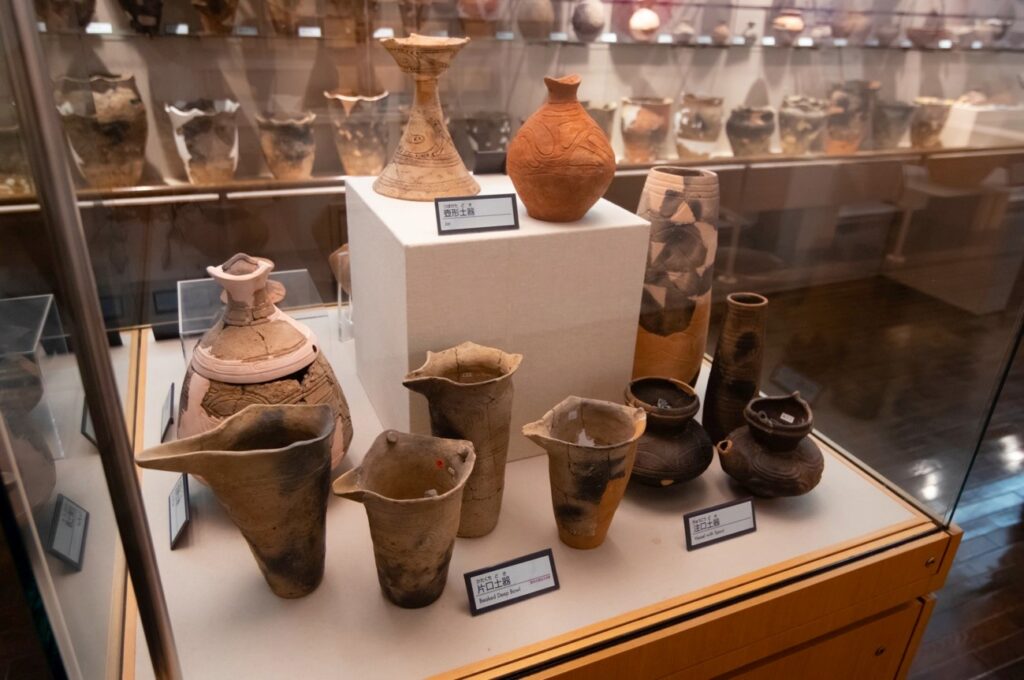
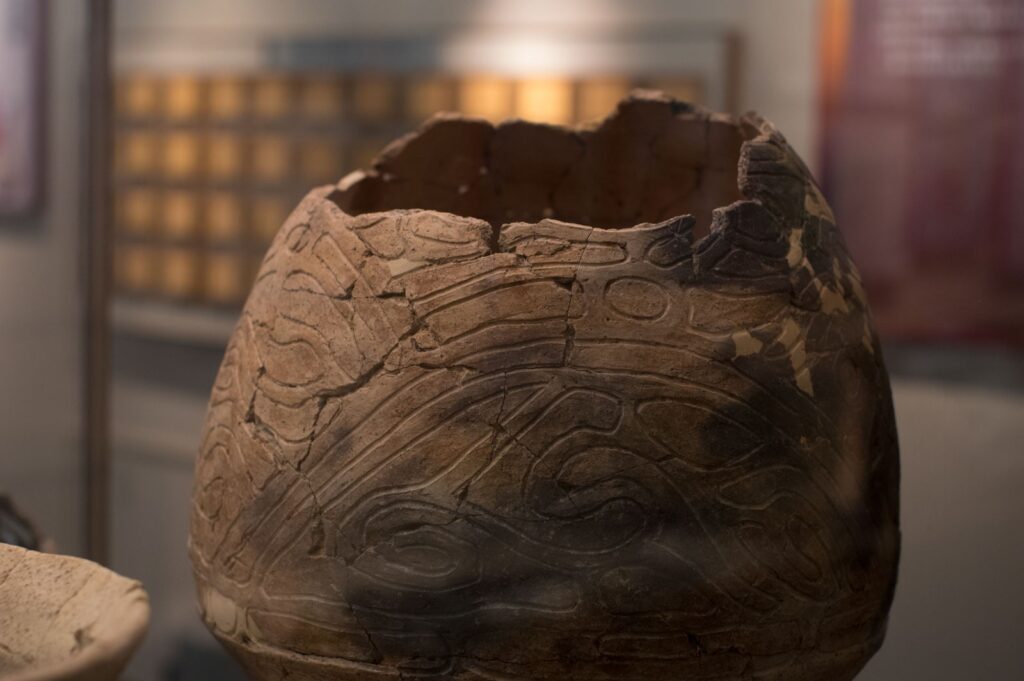
In recent years, the possibility of a re-transfer grave has been pointed out in this theory of graves in the Stone Circles of Hokkaido and North Tohoku. Re-transportation is a custom in which a body is placed in a primary burial site and allowed to whiten before a secondary burial, and is considered to be an old form of funeral ritual in Japan.
The fact that this was also done at the Oyu Stone Circles is concretely shown by the remains of four or six pillars found surrounding each circles. These pillars have now been reconstructed as dugout pillar buildings around the periphery of the stone circles, but they may have been used as places for the dead to lay their bodies to rest when the stone circles were in operation.

When you hear about the process of turning a body into white bones, you may imagine a very frightening ritual, but mourning the dead twice, as is the custom of washing bones in Okinawa and Amami regions, is a very careful way of burial.
In today’s world where funerals are systematic, bodies are cremated without any time to accept death, but in the case of re-transfer, the people left behind would have had plenty of time to accept death. Also, I think that the people could naturally understand the obvious fact that the body decays after death.

In conclusion, the Stone Circles may be a place that is as close to the dead as possible. It is here that the remaining people would have been able to connect with their ancestors and find out who they are. In this age when there is no family register, the role of the grave is to know who you are. When I think about it, I think that the grave was a positive place to live in the future.
What was the nature of the festival that took place here? Let’s imagine it with the music of J.A.K.A.M. as known as JUZU a.k.a. MOOCHY, who has created many festival places in the past.
Text : Tomoko Kusakari (nawa to yajiri), Photos : Yoshiaki Hirokawa (nawa to yajiri)
Reference : 「Kanjo Resseki tte nanda (What is Stone Circles?)」(Goshono Jomon Site Edit / Published by Shinsensha)
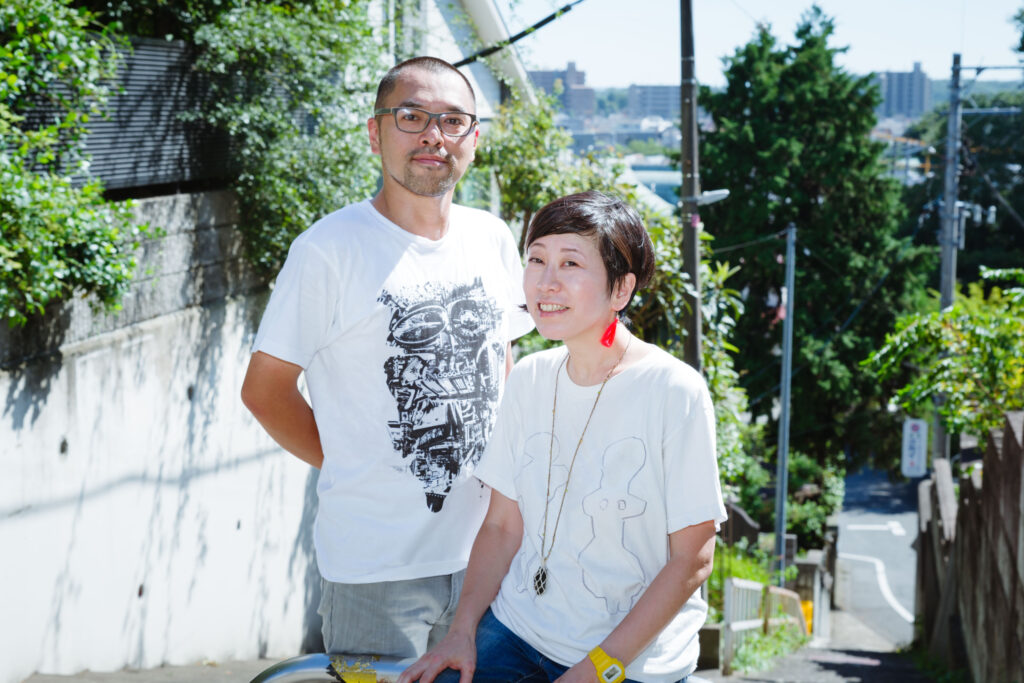
nawa to yajiri
(it means “Rope and Arrowhead”)
A unit for exploring the Jomon by Tomoko Kusakari (writing) and Yoshiaki Hirokawa (photography).
In addition to working as members of the NPO Jomonism, they also travel around Japan visiting Jomon ruins, archaeological sites and local museums, exploring the prehistoric values that can be deciphered from the forms and environments of the Jomon.
http://nawatoyajiri.com
By the way, each time we’re guided by various encounters and fates, we manage to succeed in taking pictures for the THAT IS GOOD series of ZEKKEI, and this time we had another unexpected encounter.
We hope that through the videos and music, you will be able to feel the sacred sites of ancient Jomon, the beautiful scenery, the changes in the universe and nature, and our continuous work.
TEXT : THAT IS GOOD editorial department, Nakamura